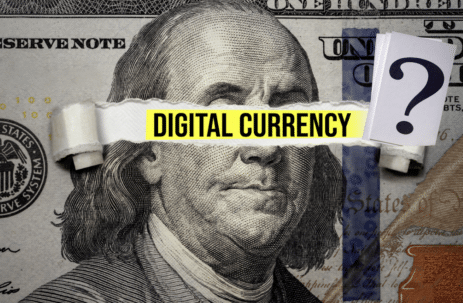Moneta: A brief history of money …

Money is a medium of exchange, not to be confused with the contemporary notion of currency. For millennia, humankind traded goods and services without cash. As civilization developed, money became exchangeable fungible products. Because people lacked trust, it was vital to identify objects with real value as “money.”
Sumerian barley money was the first known currency. Even though barley has intrinsic value, it took a lot of work to convince people to use it as cash instead of a commodity. Barley was difficult to transport and store. Money without intrinsic worth, which was easy to retain and move, gained trust. The silver shekel was a currency that appeared in Mesopotamia in the middle of the third millennium B.C. The silver shekel was 8.33 grams of silver and not a coin.
As humans progressed, money changed from shiny silver/gold coins to crisp, lighter bank notes, paving the way for today’s electronic money. In Sapiens: A Brief History of Humankind, Yuval Noah Harari estimates that the world’s money is $60 trillion, but only $6 trillion is in coins and banknotes. Over $50 trillion, or 90% of all funds, sits on computer servers. Most commercial transactions include moving electronic data from one computer file to another.
In economic theory, hard money is hard to produce, while easy money is easy. Central bank notes are easy money. Hard money is scarce and difficult to make. Gold is the ultimate hard money because it is chemically stable and cannot be synthesized from other materials. We can only extract gold from its unrefined ore, which is rare on Earth. Since gold cannot be synthesized from other molecules, humankind must mine gold from the Earth. This expensive, hazardous, uncertain operation has yielded diminishing returns for thousands of years.
To be a good store of value, something must appreciate when people seek it but be restrained from inflating the supply enough to lower the price. Therefore, gold is the ultimate store of value as its growth rate has been around 1.5%, never exceeding 2% in the past 70 years, with verifiable figures.
E-cash: The future of money …
Based on the historical evolution of money, two of its most crucial characteristics include being a unit of exchange and a store of value.
On October 31, 2008, Satoshi Nakamoto (an alias for an unknown computer programmer) emailed a cryptography mailing list to proclaim the creation of a “new peer-to-peer electronic payment system with no trusted third party.” This resulted in the creation of the bitcoin/ cryptocurrency revolution, which has the globe in a frenzy today. Bitcoin is best understood as decentralized software that enables the transfer of value using a currency shielded from inflation without needing trusted third parties. In other words, bitcoin automates the tasks of a modern central bank and renders them predictable and essentially unchangeable by encoding them into code distributed among thousands of network members, none of whom can modify the code without the approval of the others.
Bitcoin’s supply is limited to 21 million coins, each divisible into 100 million satoshis. Bitcoin’s fundamental objective was to create a store of value based on artificially created scarcity, similar to gold’s qualities. Bitcoin was an authentic technological breakthrough designed to provide universal access to formal financial services and enable seamless, peer-to-peer, and cross-border transactions. Bitcoin inspired the creation of several other cryptocurrencies, many of which, while mimicking its features, strayed away from the fundamental goal of enabling trust and maintaining scarcity, leading to wild valuation swings. As of November 2022, there are approximately 9,300 active cryptocurrencies with a market capitalization of over $811B.
Recent scams and Ponzi schemes have tarnished the credibility of the entire cryptocurrency industry. Could Decentralized Finance (DeFi) be the panacea for the crypto market’s ills? It is a plausible argument given that Bitcoin was the first DeFi program in numerous aspects. To understand more about this topic, check out our article, “DeCi-phering De-Fi.”
Regardless of the challenges facing the crypto sector, the basic tenet of cryptocurrencies to achieve financial inclusion for the world’s unbanked population has attracted the attention of central banks worldwide. According to the World Bank, 1.4 billion unbanked individuals are still worldwide. These populations are entirely cash-dependent. If these populations could access and utilize electronic currency without a bank account, they could participate in the economy without physical cash, prompting central banks to consider developing CBDC (Central Bank Digital Currency), a digital representation of a nation’s fiat currency.
In this article, we plan to address questions such as:
- Is a CBDC dissimilar to a cryptocurrency?
- Does it serve as a store of value?
- Is it unaffected by price fluctuations?
- How different is it from digital currency?
What is a CBDC?

Simply said, CBDCs are a digital form of central bank-issued currency notes. It is logical to question whether CBDCs are the same as digital currencies that have attained widespread adoption for interbank transfers.
It is essential to realize that when we make digital payments or receive digital currency, commercial banks are obligated to honor the convertibility of that currency. Notably, CBDCs are issued by central banks, which reduces the third-party risk of events such as bank failures or runs because the central bank bears the remaining systemic risks.
A CBDC assists a country’s central bank in adopting monetary policies to stabilize, control growth, and control inflation. Cryptocurrencies are volatile. This volatility may cause severe financial hardship for many individuals and undermine economic stability. CBDC, backed by a government and managed by a central bank, would provide stable digital currency exchange for households, consumers, and businesses.
The fundamental objective of CBDC is to develop a new form of currency that will have all characteristics of physical currency, such as:
- Anonymity and privacy
- Operate offline: Physical currency is independent of the internet, unlike virtual currency and online payment systems today. Remember that about 38 percent of the global population still does not use the internet.
- Legal tender is a reliable store of value for all citizens, businesses, and government institutions.
- No bank account is necessary for transactions, which will assist in achieving financial inclusion for the world’s unbanked population — the hardest-to-reach individuals, typically people experiencing poverty, those with less education, and those living in rural areas.
As a sovereign currency, CBDC has distinct advantages over other digital payment systems, as they provide settlement finality and reduce settlement risk in the financial system. CBDC could also facilitate a more smooth, real-time, cost-effective integration of cross-border payment systems.
Types of CBDC
CBDC can be divided into two broad categories:
- General purpose or retail (CBDC-R) – Potentially accessible to anyone, including the private sector, non-financial customers, and enterprises.
- Wholesale (CBDC-W) – Designed for limited financial institution access. CBDC-W settles interbank transfers and other wholesale transactions.
The structure of CBDC might be token-based or account-based.
A token-based CBDC is a bearer instrument, similar to banknotes, meaning that whoever owns the tokens at a particular time is believed to be their owner. The individual receiving a token checks the authenticity of his token ownership.
In contrast, an account-based system would necessitate recording balances and transactions for all CBDC holders and identifying the balances’ owners. Unlike a token-based CBDC, an intermediary verifies the identification of an account holder in an account-based CBDC.
Considering the qualities offered by both types of CBDC, a token-based CBDC is favored for CBDC-R since it would be closer to physical cash, but an account-based CBDC may be chosen for CBDC-W.
CBDC – Interest-bearing instrument?
At this stage, the obvious question is whether CBDC deposits will generate interest for their holders. Here, it is essential to remember what we established at the outset of this article, namely that CBDC represents an alternative to fiat currency.
The same applies to CBDC, as storing cash does not generate income, unlike depositing it in a bank account. When a consumer deposits funds into a bank account, they lend money to the bank for its operations, for which the bank pays interest. In the case of CBDC, the funds originate from the central bank, which prohibits bulk account opening by ordinary citizens. It is only natural that permitting retail consumers to open accounts with central banks will render commercial banks ineffective and imperil the economic structure of a nation as a whole.
The technology underpinning CBDC

Blockchain, the technology underlying bitcoin and other cryptocurrencies, has the following well-established advantages:
- Integrated systems designed to share value and securely transfer ownership.
- Smart contract programmability supports CBDC as a new programmable financial instrument that could initiate automated payments based on pre-programmed criteria.
- Transparent audit trails.
- Configurable privacy features.
- Atomic swaps increase interchange with other digital assets.
These benefits are not lost on central banks, so most CBDC pilot or production programs incorporate blockchain technology.
While blockchain appears to be the obvious technology choice for deployment, many disagree. These central banks would be hesitant to adopt the decentralized character of bitcoin because they prefer a central authority to oversee and supervise the underlying transactions. In their research, the Federal Reserve Bank of Boston and the Digital Currency Initiative at the Michigan Institute of Technology discovered that distributed ledgers could impair the efficiency and scalability of a CBDC.
The ability of cryptocurrencies to preserve anonymity during transactions is the primary reason for their widespread acceptance. To make CBDC attractive to this portion of the people, some layers of the CBDC tech stack can be on distributed networks while the remainder is on centralized systems. For instance, it makes sense to implement a distributed ledger technology for CBDC-R, whereas a standard centralized layer may be suitable for CBDC-W.
Accessibility when connectivity is unavailable
Digital payments typically need internet interactions with several third parties, including banks, payment networks, and payment processors, in order to authenticate and process payments. Even though these communication networks are meant to be highly available with constant uptime, CBDC users may occasionally experience poor or no network connectivity. Remember that a large portion of the global population lacks internet access? Therefore, CBDC systems must have offline functionality.
Visa has proposed an Offline Payment System (OPS) that permits CBDC to be downloaded on a mobile device, such as a smartphone or tablet. The funds are saved on secure hardware incorporated in the device and managed by a wallet service provider. Using Bluetooth and Near Field Communication (NFC), the CBDC can be sent from one device to another without intermediaries.
Similarly, the Bank of Japan (BoJ) has published a study paper addressing the possible offline use of CBDCs. Among the solutions investigated in the study is using an integrated circuit (I.C.) on a SIM card with a feature phone instead of a smartphone.
While there are many projects to achieve offline operation, periodic power and network connectivity would be required to reload or redeem CBDC balances or to synchronize the local wallet balances with central servers.
Countries evaluating/developing CBDC
According to statistics from CBDC Tracker, north of 100 countries are now investigating or have already investigated CBDC. Out of these 2 countries – the Bahamas and Jamaica have already launched CBDC geared towards retail (CBDC-R). Seventeen countries are in the pilot phase. China, India, France, Canada, Singapore, and Saudi Arabia are among the leading economies on this list of pilot countries.
Epilogue
As a result of the digital revolution, no other industry has seen a dramatic transformation as payment and settlement systems, affording the average person many digital opportunities. The digitalization of monetary units has extended beyond fiat currencies, as seen by the rise of cryptocurrencies. CBDC is a form of fiat money influenced by the emergence of cryptocurrencies and blockchain technology, as demonstrated in this research. The benefits of CBDC are intended to offset the systemic risks in the existing cryptocurrency market, such as financial stability and the provision of recoverability in unfortunate situations. CBDC’s strengths include legal implications such as consumer protection and grievance resolution and the ability to combat security concerns such as anti-money laundering (AML) and counter-terrorism financing (CTF).
While the pros or benefits of this new kind of currency have been well-established, its widespread adoption hast yet to be assured. For countries that are still relying on cash or whose population the whole nature of life is highly dependent on the use of physical cash, it will take a great deal of work on the part of the government or central banks to encourage the adoption of this new financial instrument.
Time alone will tell.
References:
- https://www.ynharari.com/topic/money-and-politics/
- https://www.wiley.com/en-in/The+Bitcoin+Standard:+The+Decentralized+Alternative+to+Central+Banking-p-9781119473862
- https://mint.intuit.com/blog/investments/the-history-of-money/#:~:text=Before%20money%20was%20invented%2C%20people,were%20used%20to%20pay%20armies
- https://www.investopedia.com/terms/c/central-bank-digital-currency-cbdc.asp
- https://medium.com/@bitmemers/to-the-printing-press-we-go-easy-money-vs-hard-money-de4d1cf536
- https://rbidocs.rbi.org.in/rdocs/PublicationReport/Pdfs/CONCEPTNOTEACB531172E0B4DFC9A6E506C2C24FFB6.PDF
- https://www.pwc.com/gx/en/industries/financial-services/assets/pwc-cbdc-global-index-1st-edition-april-2021.pdf
- https://www.bostonfed.org/publications/one-time-pubs/project-hamilton-phase-1-executive-summary.aspx
- https://www.idemia.com/infographic/central-bank-digital-currency-cbdc-explained
- https://www.boj.or.jp/research/brp/psr/data/psrb200702.pdf
- https://usa.visa.com/dam/VCOM/global/sites/visa-economic-empowerment-institute/documents/veei-secure-offline-cbdc.pdf





